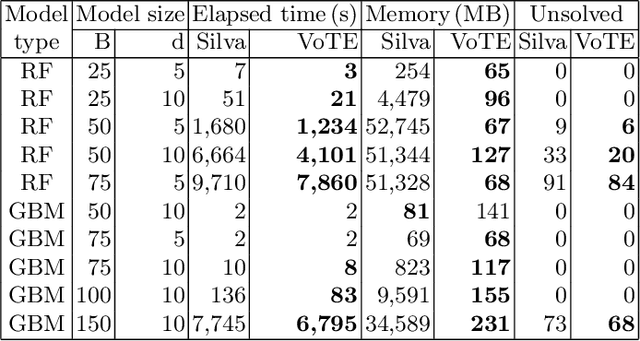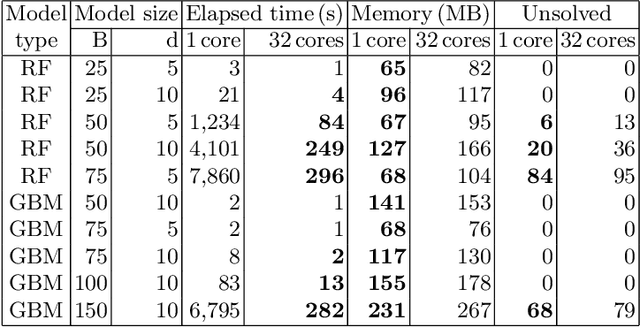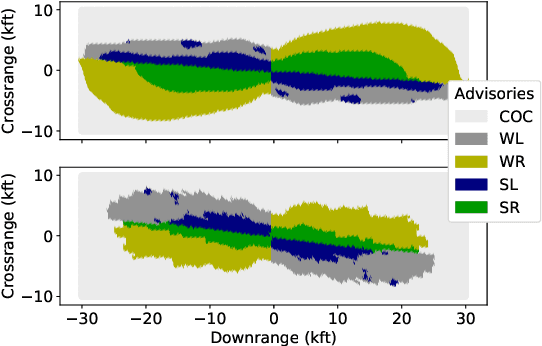Scaling up Memory-Efficient Formal Verification Tools for Tree Ensembles
Paper and Code
May 06, 2021



To guarantee that machine learning models yield outputs that are not only accurate, but also robust, recent works propose formally verifying robustness properties of machine learning models. To be applicable to realistic safety-critical systems, the used verification algorithms need to manage the combinatorial explosion resulting from vast variations in the input domain, and be able to verify correctness properties derived from versatile and domain-specific requirements. In this paper, we formalise the VoTE algorithm presented earlier as a tool description, and extend the tool set with mechanisms for systematic scalability studies. In particular, we show a) how the separation of property checking from the core verification engine enables verification of versatile requirements, b) the scalability of the tool, both in terms of time taken for verification and use of memory, and c) that the algorithm has attractive properties that lend themselves well for massive parallelisation. We demonstrate the application of the tool in two case studies, namely digit recognition and aircraft collision avoidance, where the first case study serves to assess the resource utilisation of the tool, and the second to assess the ability to verify versatile correctness properties.
 Add to Chrome
Add to Chrome Add to Firefox
Add to Firefox Add to Edge
Add to Edge